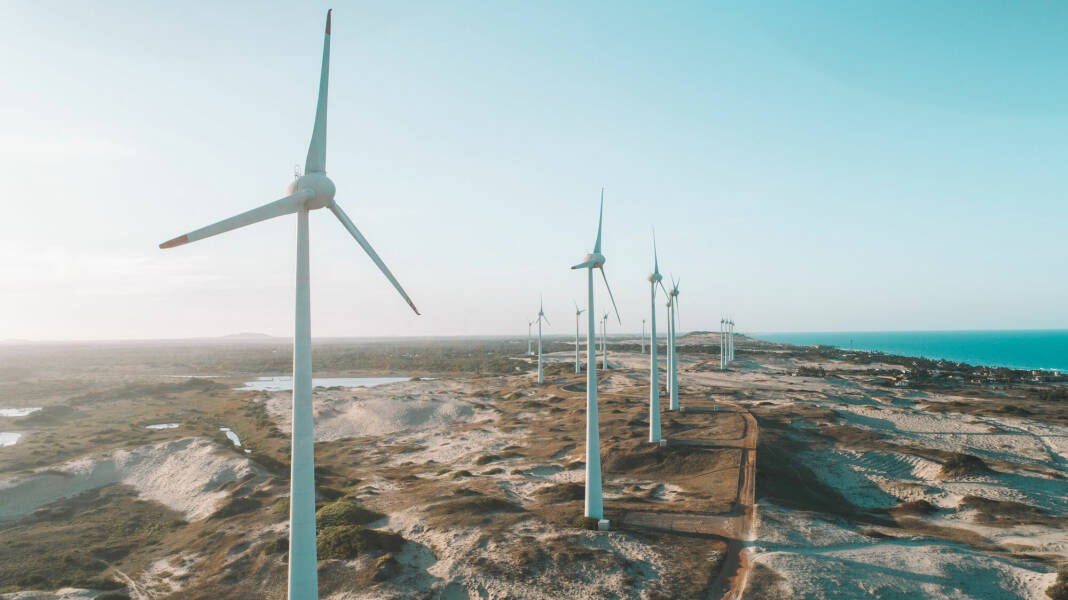
Provide a healthy and inclusive workplace for 370,000 associates by:
- Making healthier food choices available in all workplaces for all associates
Enabling associates to become healthy food ambassadors by supporting them in eating nutritious foods
Creating a work environment in which everyone is valued and where everyone can reach their full potential
- Reduce food waste by:
Maximizing the recovery of unsold food to reduce hunger
Working with suppliers on innovations to reduce food waste upstream
Helping customers reduce food waste at home
Enable brands' customers and associates to eat healthier food every day by:
Innovating to make healthier eating more affordable and more fun
Inspiring customers and associates with programs and services to make healthier eating easy, every day
Rewarding customers and associates for nutritious choices
Improving the assortment to increase sales of nutritious own-brand products to 45%
The focus of the sustainable retailing strategy of Ahold Delhaize for the coming 5 years is:
Ahold Delhaize is one of the world’s largest food retail groups, a leader in supermarkets and e-commerce, and a company at the forefront of sustainable retailing. The family of 21 local brands serves more than 50 million shoppers each week in 11 countries. The sustainable retailing strategy of Ahold Delhaize is based on their most material topics and leverages the global reach, market expertise and local brands to enable them to lead the industry in making sustainable retailing the norm.
ahold delhaize
Rabobank takes responsibility in a more sustainable consumption and production chain by:
Offering 20 billion US dollars in sustainable financing every year.
Offering 3 billion US dollars in sustainable funding every year.
Partnering with 30 other leading organisations to help reduce global food waste.
Being active in 9 roundtables for sustainable supply chains and publishing 2 value chain visions, one about palm oil and one about coffee.
Rabobank is a socially responsible bank, committed to contributing to welfare and prosperity and to solving the global food issue. The bank is active in forty countries worldwide and serves approximately 10 million customers. Rabobank helps to achieve the SDGs by offering financial support, sharing knowledge and connecting parties. The bank has embedded their contribution to the SDGs in a strategic ambition because, as a socially responsible bank, they feel a responsibility to take up the challenge of making a meaningful contribution to achieving the seventeen sustainability goals.
rabobank
- Helping more than a billion people take action to improve their health and well-being.
Halving the environmental impact of their products by 2030.
Enhancing the livelihoods of millions of people.
Unilever has pledged to become carbon positive in its operations by 2030.
The three main goals of Unilever’s Sustainable Living Plan are:
Unilever is one of the world’s leading suppliers of food, home care, personal care and refreshment products with sales in over 190 countries, reaching 2.5 billion consumers a day. Over half (57%) of the company’s footprint is in developing and emerging markets. Unilever has more than 400 brands found in homes all over the world, including Persil, Dove, Knorr, Domestos, Hellmann’s, Lipton, Wall’s, PG Tips, Ben & Jerry’s, Magnum and Lynx. The company developed their own Unilever’s Sustainable Living Plan (USLP). USLP is the blueprint for achieving a vision to grow their business, whilst decoupling the environmental footprint from their growth and increasing the positive social impact. The plan sets stretching targets, including how the company sources raw materials and how consumers use their brands.
unilever
How are big food companies contributing to SDG 12?
Sustainable consumption and production is about doing more and better with less. It’s also about decoupling economic growth from environmental degradation, increasing resource efficiency and promoting sustainable lifestyles. Worldwide there are a lot of small companies and initiatives that are committed to a more sustainable system of consumption and production. Together, these small initiatives can bring about a lot of change. But the biggest impact comes from the big companies. What are multinationals doing?
A few facts about food consumption and production
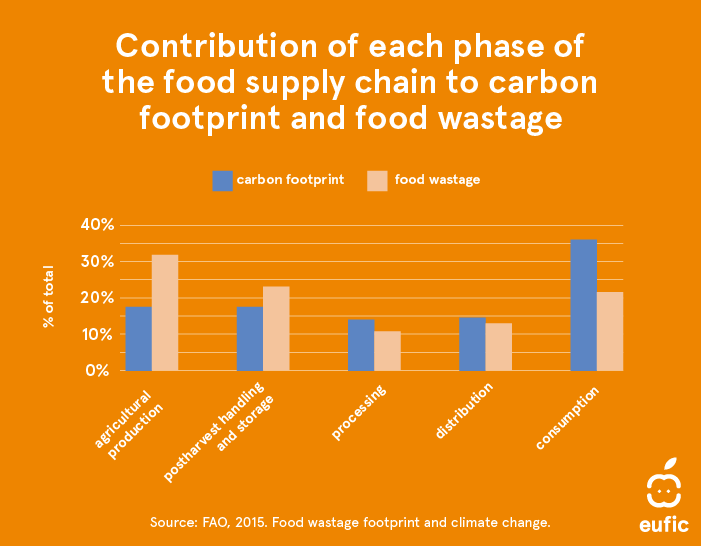
Less than 3% of the world’s water is fresh (drinkable), 2.5% of which is frozen in Antarctica in the Arctic and glaciers. Humanity must therefore rely on 0.5% for all of man’s ecosystems and freshwater needs.
More than 1 billion people still do not have access to fresh water.
Agriculture (including irrigation, livestock and aquaculture) is by far the largest water consumer, accounting for 69% of annual water withdrawals globally.
Households consume 29% of global energy and consequently contribute to 21% of resultant CO2 emissions.
Each year, an estimated one third of all food produced – equivalent to 1.3 billion tons worth around 1 trillion US dollars – ends up rotting in the bins of consumers and retailers, or spoiling due to poor transportation and harvesting practices.
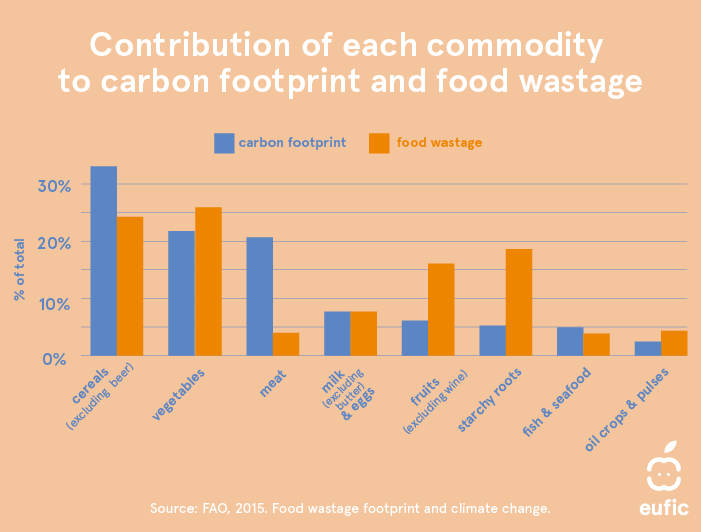
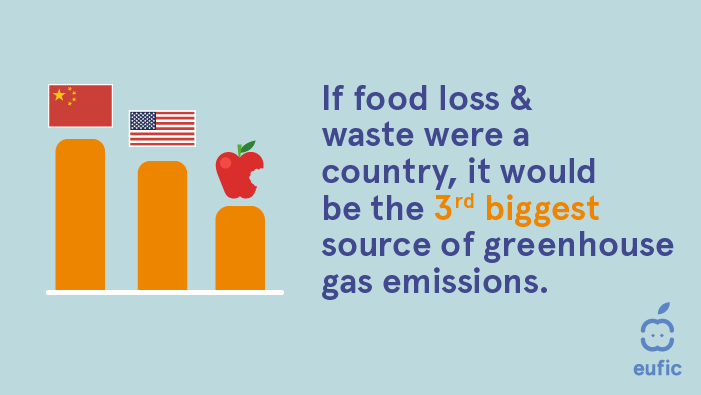
- Food waste generates about 8% - 10% of global greenhouse gas emissions. If food loss and waste were a country it would be the third biggest source of greenhouse gas emissions. Food waste emits more greenhouse gases than all single countries in the world, except China and the US.
- The food sector accounts for around 30% of the world’s total energy consumption and accounts for around 22% of total greenhouse gas emissions.
- Should the global population reach 9.6 billion by 2050, the equivalent of almost three planets could be required to provide the natural resources needed to sustain current lifestyles.
Images by EUFIC, The European Food Information Council, a consumer-oriented non-profit organisation, founded to make the science behind food and health more accessible and easier to understand among the public.
Worldwide food consumption and production — a driving force of the global economy — rests on the use of the natural environment and resources in a way that continues to have destructive impacts on the planet. What are the facts? What are big food companies doing to contribute to Sustainable Development Goal number 12: ensure sustainable consumption and production?
Maaike de Reuver Xiao Er Kong
The sustainability plans of Unilever, Rabobank and Ahold Delhaize
TRENDWATCH
5 min
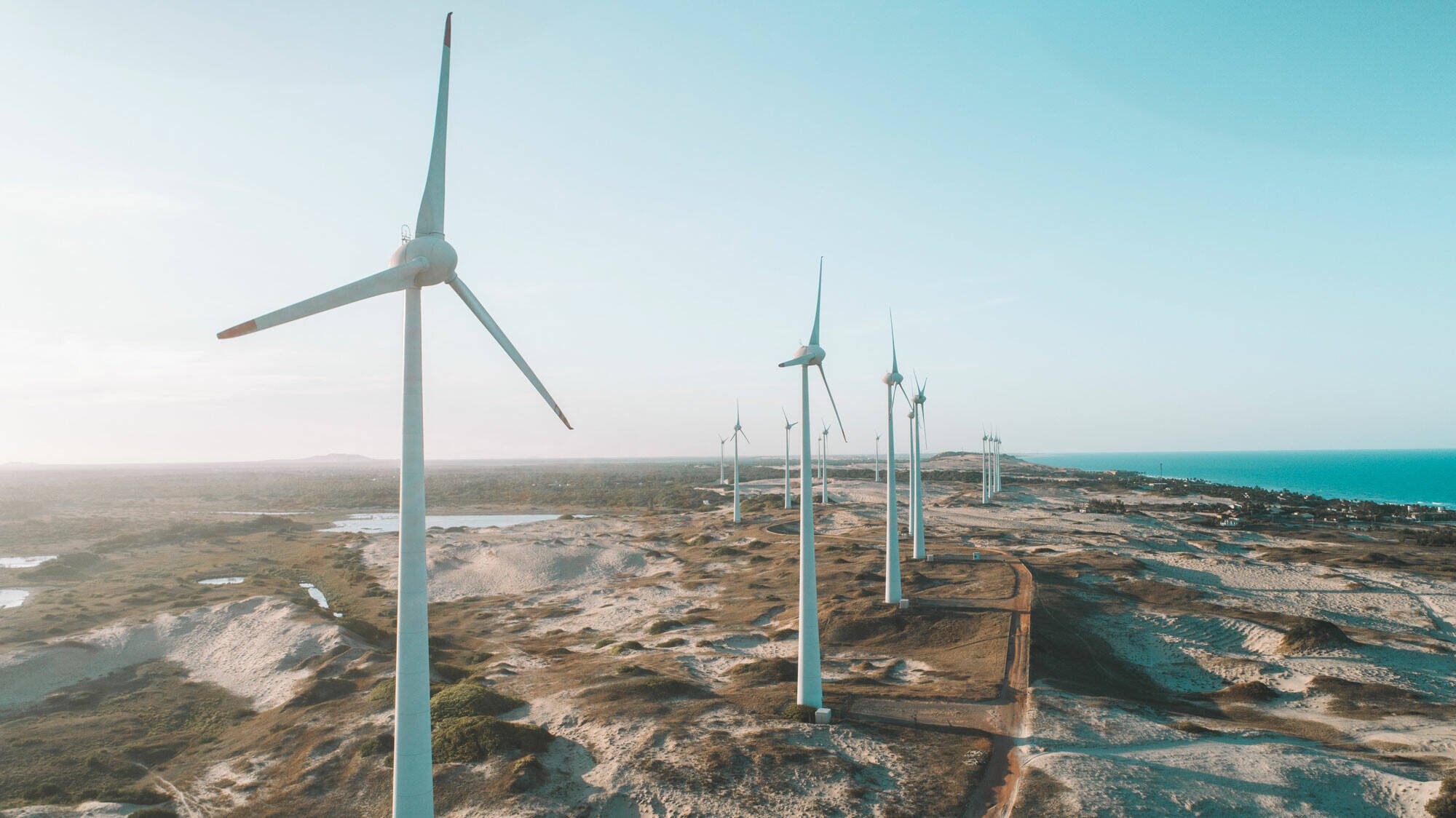

Provide a healthy and inclusive workplace for 370,000 associates by:
- Making healthier food choices available in all workplaces for all associates
Enabling associates to become healthy food ambassadors by supporting them in eating nutritious foods
Creating a work environment in which everyone is valued and where everyone can reach their full potential
- Reduce food waste by:
Maximizing the recovery of unsold food to reduce hunger
Working with suppliers on innovations to reduce food waste upstream
Helping customers reduce food waste at home
Enable brands' customers and associates to eat healthier food every day by:
Innovating to make healthier eating more affordable and more fun
Inspiring customers and associates with programs and services to make healthier eating easy, every day
Rewarding customers and associates for nutritious choices
Improving the assortment to increase sales of nutritious own-brand products to 45%
The focus of the sustainable retailing strategy of Ahold Delhaize for the coming 5 years is:
Ahold Delhaize is one of the world’s largest food retail groups, a leader in supermarkets and e-commerce, and a company at the forefront of sustainable retailing. The family of 21 local brands serves more than 50 million shoppers each week in 11 countries. The sustainable retailing strategy of Ahold Delhaize is based on their most material topics and leverages the global reach, market expertise and local brands to enable them to lead the industry in making sustainable retailing the norm.
ahold delhaize
Rabobank takes responsibility in a more sustainable consumption and production chain by:
Offering 20 billion US dollars in sustainable financing every year.
Offering 3 billion US dollars in sustainable funding every year.
Partnering with 30 other leading organisations to help reduce global food waste.
Being active in 9 roundtables for sustainable supply chains and publishing 2 value chain visions, one about palm oil and one about coffee.
Rabobank is a socially responsible bank, committed to contributing to welfare and prosperity and to solving the global food issue. The bank is active in forty countries worldwide and serves approximately 10 million customers. Rabobank helps to achieve the SDGs by offering financial support, sharing knowledge and connecting parties. The bank has embedded their contribution to the SDGs in a strategic ambition because, as a socially responsible bank, they feel a responsibility to take up the challenge of making a meaningful contribution to achieving the seventeen sustainability goals.
rabobank
- Helping more than a billion people take action to improve their health and well-being.
Halving the environmental impact of their products by 2030.
Enhancing the livelihoods of millions of people.
Unilever has pledged to become carbon positive in its operations by 2030.
The three main goals of Unilever’s Sustainable Living Plan are:
Unilever is one of the world’s leading suppliers of food, home care, personal care and refreshment products with sales in over 190 countries, reaching 2.5 billion consumers a day. Over half (57%) of the company’s footprint is in developing and emerging markets. Unilever has more than 400 brands found in homes all over the world, including Persil, Dove, Knorr, Domestos, Hellmann’s, Lipton, Wall’s, PG Tips, Ben & Jerry’s, Magnum and Lynx. The company developed their own Unilever’s Sustainable Living Plan (USLP). USLP is the blueprint for achieving a vision to grow their business, whilst decoupling the environmental footprint from their growth and increasing the positive social impact. The plan sets stretching targets, including how the company sources raw materials and how consumers use their brands.
unilever
How are big food companies contributing to SDG 12?
Sustainable consumption and production is about doing more and better with less. It’s also about decoupling economic growth from environmental degradation, increasing resource efficiency and promoting sustainable lifestyles. Worldwide there are a lot of small companies and initiatives that are committed to a more sustainable system of consumption and production. Together, these small initiatives can bring about a lot of change. But the biggest impact comes from the big companies. What are multinationals doing?
A few facts about food consumption and production
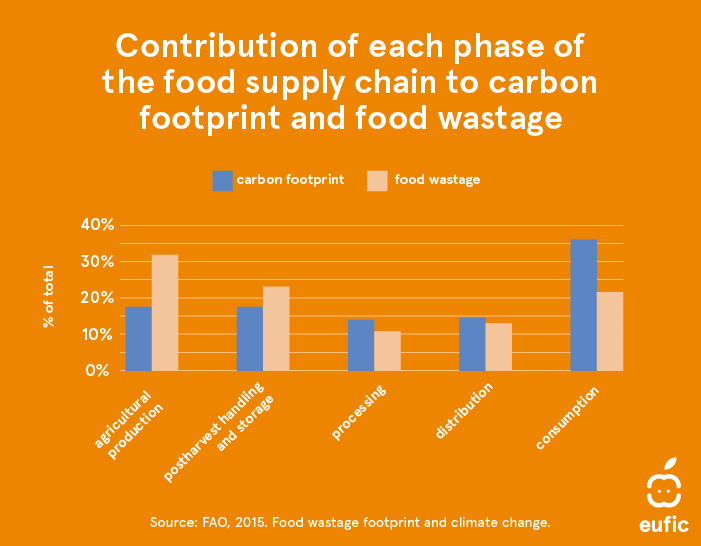
Less than 3% of the world’s water is fresh (drinkable), 2.5% of which is frozen in Antarctica in the Arctic and glaciers. Humanity must therefore rely on 0.5% for all of man’s ecosystems and freshwater needs.
More than 1 billion people still do not have access to fresh water.
Agriculture (including irrigation, livestock and aquaculture) is by far the largest water consumer, accounting for 69% of annual water withdrawals globally.
Households consume 29% of global energy and consequently contribute to 21% of resultant CO2 emissions.
Each year, an estimated one third of all food produced – equivalent to 1.3 billion tons worth around 1 trillion US dollars – ends up rotting in the bins of consumers and retailers, or spoiling due to poor transportation and harvesting practices.

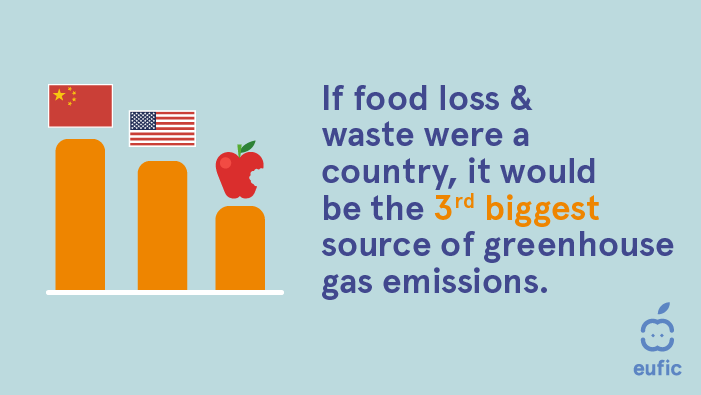
- Food waste generates about 8% - 10% of global greenhouse gas emissions. If food loss and waste were a country it would be the third biggest source of greenhouse gas emissions. Food waste emits more greenhouse gases than all single countries in the world, except China and the US.
- The food sector accounts for around 30% of the world’s total energy consumption and accounts for around 22% of total greenhouse gas emissions.
- Should the global population reach 9.6 billion by 2050, the equivalent of almost three planets could be required to provide the natural resources needed to sustain current lifestyles.
Images by EUFIC, The European Food Information Council, a consumer-oriented non-profit organisation, founded to make the science behind food and health more accessible and easier to understand among the public.
Worldwide food consumption and production — a driving force of the global economy — rests on the use of the natural environment and resources in a way that continues to have destructive impacts on the planet. What are the facts? What are big food companies doing to contribute to Sustainable Development Goal number 12: ensure sustainable consumption and production?
Maaike de Reuver Xiao Er Kong
What do big food companies do to contribute to a more sustainable chain of consumption and production?
The sustainability plans of Unilever, Rabobank and Ahold Delhaize
5 min
